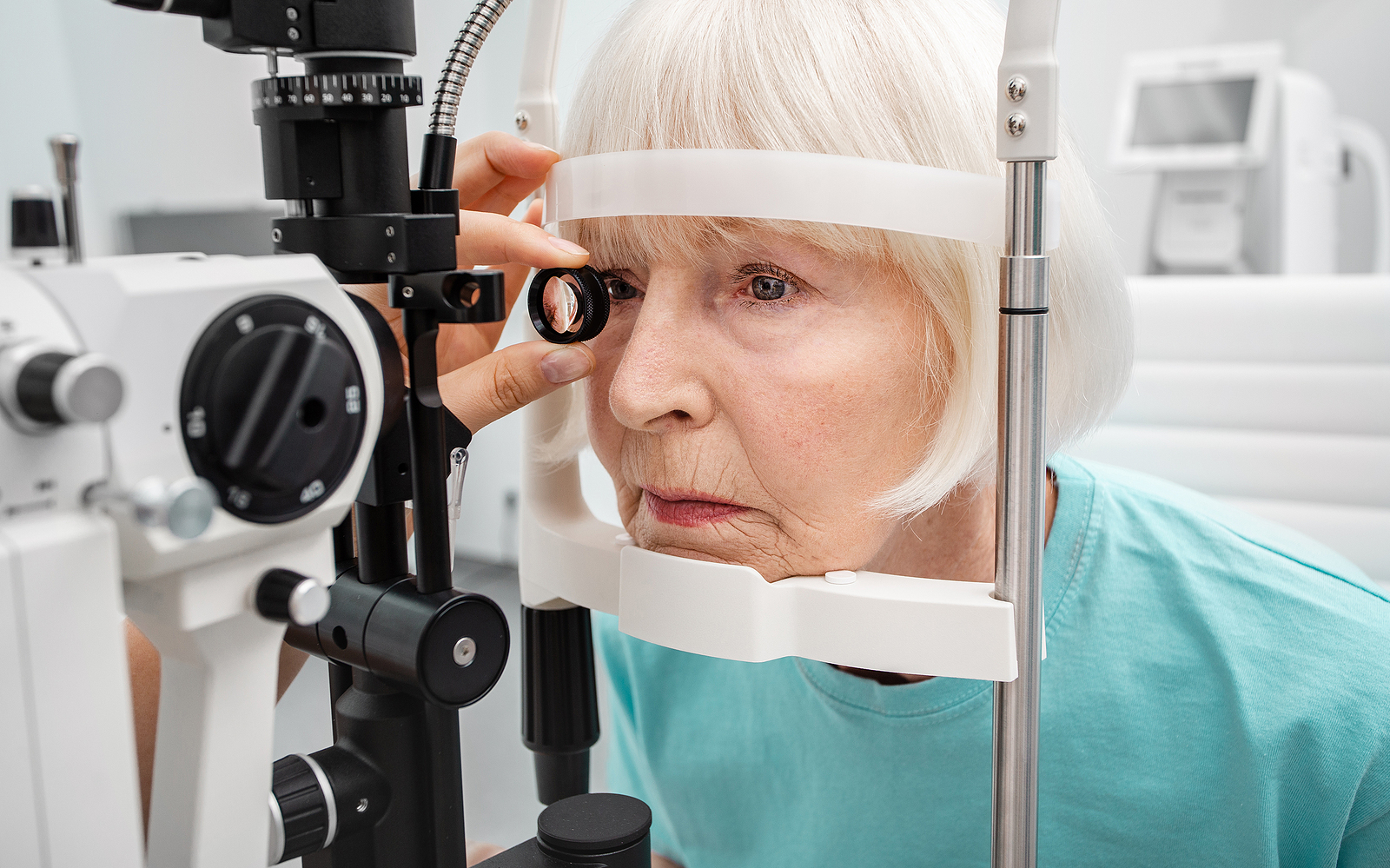Find Out If You Qualify for Clear Lens Exchange (CLE)

For patients with extreme prescriptions, presbyopia, or abnormal corneas, clear lens exchange may offer a long-lasting vision solution.
While LASIK surgery is an excellent vision correction option for many patients, it’s not a one-size-fits-all solution. For patients with extreme prescriptions that may be subject to change, presbyopia, or particularly thin corneas, LASIK is often not a suitable option.
For these patients, there’s another procedure that can offer better, longer-lasting results: clear lens exchange (CLE). CLE — also known as lens replacement surgery or refractive lens exchange — replaces your eye’s natural lens with an artificial intraocular lens (IOL), correcting the eye’s refractive error and allowing for sharper focus. The IOL is a permanent replacement for the natural lens. It’s designed to last for the rest of your life, and patients are at minimal risk of regression.
Patients who undergo CLE often find they’re able to go without their bifocals or reading glasses after the procedure, and CLE can even help minimize their risk of developing cataracts later in life. Read on to determine whether CLE may be a good fit for you.
The Clear Lens Exchange Procedure
Like LASIK, CLE is a quick, painless procedure that’s performed on an outpatient basis. It usually doesn’t take more than 15 minutes, though it does require two appointments, as each eye is operated on separately, typically about a week apart.
The CLE procedure is remarkably similar to cataract surgery, as both involve replacing the eye’s natural lens with an artificial one. However, in cataract surgery, the lens that’s removed from the eye is clouded, whereas with CLE, the lens is clear.
Usually, patients need about a week to recover from CLE. During that time, they may notice symptoms such as blurred vision, a scratchy sensation in the eye, eye floaters, and halos around objects. Once these symptoms subside, patients should be safe to return to work and resume driving. What’s more, because IOLs are placed inside the eye (as opposed to on top like a contact lens), CLE patients won’t feel the implanted lens, nor will others be able to see it.
Are You a Good Candidate for CLE?
More often than not, patients who aren’t a good fit for LASIK surgery find that CLE is a more suitable option. Included in this group are patients with a very severe refractive error, an abnormal cornea, or presbyopia (age-related farsightedness).
Unlike LASIK, CLE can correct almost any degree of farsightedness, and farsighted patients tend to experience better visual acuity after CLE than they do after LASIK. As a rule of thumb, the best-suited candidates for CLE include:
- Patients over the age of 40 who use reading glasses
- Patients over the age of 40 with extreme prescriptions or abnormal corneas
- Patients experiencing the early onset of cataracts
If you’re considering vision correction surgery and believe you may be a good fit for CLE, reach out to the eyecare experts at Swagel Wootton Eye Institute today. Our specialists can help you understand your treatment options and determine a path that’s right for you. Take the first step to clear vision — reach out to Swagel Wootton today at our Mesa and Chandler locations.
[DISPLAY_ULTIMATE_SOCIAL_ICONS]








